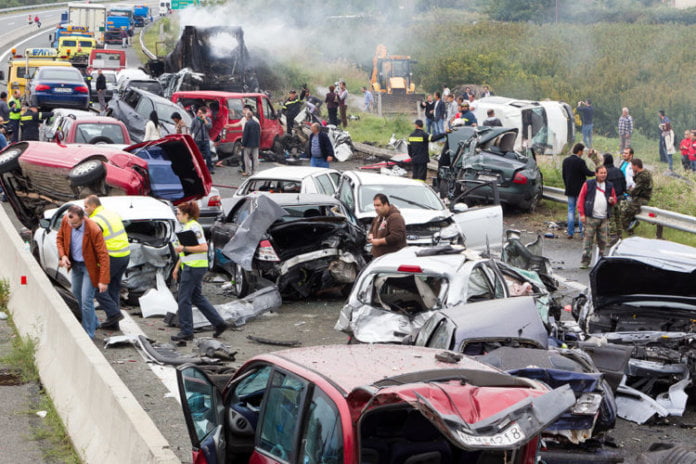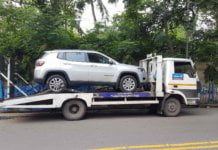Auto collisions are challenging enough to resolve, even when only two vehicles are involved. The circumstances become far more complex when three or more are affected by a single crash. Often, in these cases, there may have been an environmental hazard that first affected a single car, only to pull the others in incidentally. In other instances, one driver may have stopped suddenly, causing a domino effect of cars rear-ending one another. Suppose you’ve found yourself in this type of auto accident. In that case, it is essential to immediately contact a multi-vehicle accident law firm to ensure your rights are fully protected and that you are provided with all you need to know about proving liability in your multi-vehicle collision case.

What to Do After a Multi-Vehicle Collision
After an auto collision, one of the most important things you must do is collect all parties’ personal information. Although this may seem like a simple, inconsequential step, it is critical to developing your case.
Drivers who feel guilty may be tempted to falsify information regarding the crash or even lie about their involvement. Having their contact and insurance information is essential to thwarting such efforts. With several vehicles involved, this step will be much harder to accomplish, yet you must do this attentively.
Once you have collected all parties’ documentation, record all crash details. As you photograph and shoot videos of the scene, get all affected vehicles in your images. This factor will become essential in proving liability, as the cars’ relative positions can provide insight into who was responsible for the crash. Additional evidence that can support proof of liability includes:
- Witness testimonies
- Police reports
- Dashcams or other similar technology
- The orientations of skid marks or other signs on the road
Consider the scenarios described below for further insight.
Examples of Liability in Multi-Vehicle Accidents
The following are examples of how fault can be determined in a multi-car pileup:
- Three cars are driving along the highway when one stops suddenly. The car directly behind them cannot stop in time, colliding with them and causing the vehicle behind them to do the same. In this case, the first driver is at fault (depending on whether the state is a tort state), and the vehicle’s relative positions in your photos will clearly illustrate this.
- Three motorists, A, B, and C, drive along the highway. Driver A is texting, causing them to unknowingly exceed the speed limit and crash into Driver B ahead of them. This pushes Driver B’s car into Driver C, causing a pileup. Since this wasn’t as straightforward as everyone rear-ending one another, you will need additional evidence, as listed above (i.e., witness statements, photos of skid marks, even phone records), to demonstrate the fault of Driver A.
Proving liability in multi-vehicle accidents is quite challenging, as you can see. Yet, it is not impossible. As long as you are attentive to the precise evidence you record, you can protect yourself from false accusations of fault and ensure you receive your due compensation.




